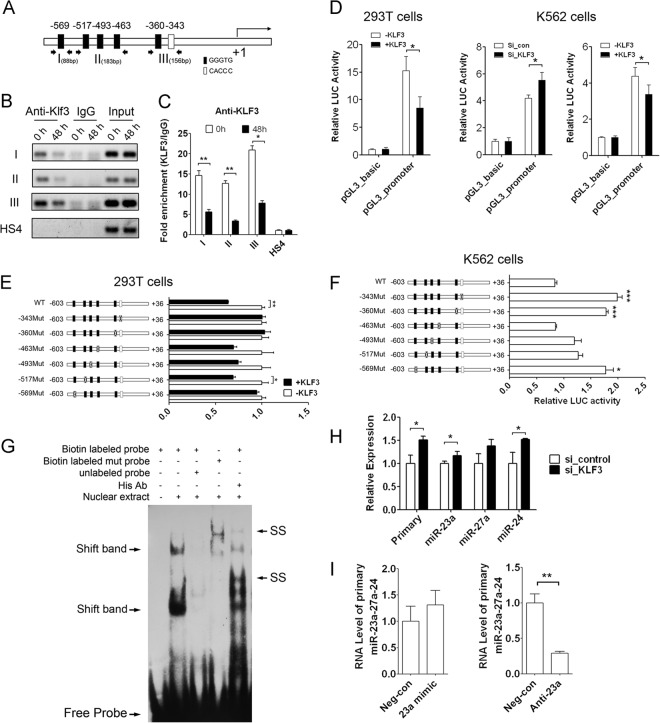Fig 6.
KLF3 resides in the promoter of the miR-23a cluster and represses its expression. (A) The six putative KLF3 binding sites scattered within the promoter region of the human miR-23a cluster gene.(B) ChIP-PCR analysis of KLF3 binding to the six putative sites in the miR-23a cluster promoter during hemin-induced K562 erythroid differentiation. (C) ChIP-qPCR analysis of KLF3 binding to the six putative sites in the miR-23a cluster promoter during hemin-induced K562 erythroid differentiation. (D) Relative luciferase activity representing the miR-23a promoter activity in 293T cells cotransfected with KLF3 or negative control, in K562 cells cotransfected with si_KLF3/si_control, and in hemin-induced K562 cells with KLF3 overexpression. (E and F) Relative luciferase activity of a series of luciferase reporters containing the corresponding mutated promoter in 293T cells cotransfected with KLF3 (E) and also in K562 (F) cells. (G) EMSA of the binding of KLF3 with the −569 CACCC sites in vitro. Shift band stands for specific KLF3/probe complex, and SS represents the supershift band. Ab, antibody. (H) qPCR analysis of the primary transcript and the mature members of the miR-23a cluster in K562 cells transfected with KLF3 siRNA. (I) qPCR analysis of the primary miR-23a cluster in K562 cells transfected with miR-23a mimic or inhibitor. Student's t test (two-tailed) was performed to analyze the data from the experiments in triplicate. *, P < 0.05; **, P < 0.01; ***, P < 0.001.

